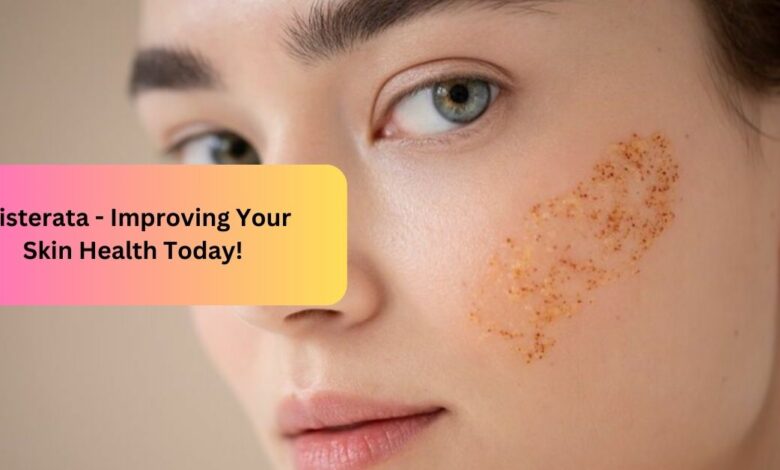Blisterata – Improving Your Skin Health Today!

Having Blisterata was hard because my skin got painful blisters from the sun and stress. I feel much better and more comfortable now, thanks to medicine and skin protection!
Blisterata is a skin problem that causes blisters. Genes, sunlight, chemicals, smoking, or stress can cause it. Doctors use medicine and lifestyle changes to help treat blisters and improve people’s health.
Having Blisterata feels like a surprise blister journey on your skin!
What Is Blisterata – Let’s Talk About It!
Blisterata is a dermatological condition manifesting as blisters on the skin’s surface. These blisters can range from small to large and emerge anywhere on the body. The condition is multifaceted, arising from genetic predisposition, environmental influences, and individual lifestyle choices.
Genetic factors are known to play a crucial role in Blisterata, with specific gene mutations increasing the susceptibility of individuals to develop this condition. Environmental triggers, such as prolonged exposure to sunlight and contact with certain chemicals or allergens, can further aggravate the symptoms of Blisterata. Lifestyle habits like smoking and high-stress levels also contribute significantly to its onset and severity.
Overall, Blisters are a complex interplay of genetic, environmental, and lifestyle factors that lead to the formation of blisters on the skin and require comprehensive management strategies for effective treatment and symptom control.
How Does Blisterata Develop – Take Charge Of Your Skin’s Well-Being!
Blisterata’s development is a complex interplay of genetic predisposition, environmental triggers, and lifestyle factors. Genetic influences play a pivotal role, with specific gene mutations increasing the susceptibility of individuals to develop this dermatological condition. These genetic factors can make the skin more sensitive to external triggers.
Environmental triggers contribute significantly to Blisterata’s development and exacerbation. Prolonged exposure to ultraviolet (UV) rays from sunlight, contact with certain chemicals or allergens, and other environmental factors can stimulate the skin, leading to blister formation.
Lifestyle habits also impact Blisterata. Smoking, for example, can affect skin health and make individuals more prone to skin conditions like Blisterata. High-stress levels can weaken the immune system and trigger flare-ups of the condition.
Why Does Blisterata Cause Blisters – Take Steps To Protect Your Skin!
Blisterata causes blisters due to its impact on the skin’s health and integrity. The condition disrupts the typical structure and function of the skin, forming fluid-filled blisters on the skin’s surface.
Blisterata causes blisters because of its effect on the skin’s barrier function. The condition can weaken the skin’s protective barrier, making it more susceptible to damage from external factors such as friction, heat, or chemical exposure. This weakened barrier allows fluid to accumulate beneath the skin, resulting in the formation of blisters.
Additionally, Blisterata can trigger an inflammatory response in the skin. Inflammation causes swelling and fluid accumulation in the affected area, and the immune system’s response to Blisterata can also contribute to blister formation.
Furthermore, genetic factors associated with Blisterata can affect the skin’s ability to repair and regenerate itself. This can lead to abnormalities in skin cell turnover and function, further predisposing individuals to blister formation.
When Does Blisterata Show Symptoms – Learn How To Manage Them!
Depending on individual factors and environmental triggers, Blisterata can show symptoms at various times. The onset and frequency of symptoms can vary from person to person.
For some individuals, Blisterata symptoms may appear during childhood or adolescence, indicating an early manifestation of the condition. These early symptoms can include the formation of small blisters on the skin, particularly in areas prone to friction or pressure.
Environmental triggers play a significant role when Blisterata symptoms are present. Exposure to sunlight, certain chemicals, allergens, or irritants can provoke flare-ups of the condition, leading to the sudden appearance of blisters and skin irritation. In some cases, extreme weather conditions, such as hot and humid climates, can also exacerbate Blisterata symptoms.
Stressful periods or emotional distress can also trigger Blisterata symptoms. High-stress levels can weaken the immune system and increase inflammation, potentially leading to flare-ups of the condition.
How Is Blisterata Diagnosed – Take Proactive Steps!
Diagnosing Blisterata typically involves a thorough evaluation by a dermatologist or healthcare provider specializing in skin conditions. The diagnosis process includes:
1. Medical History:
The doctor will inquire about the patient’s medical history, including any previous skin conditions, family history of dermatological disorders, and potential triggers or factors that may contribute to Blisterata.
2. Physical Examination:
The skin is thoroughly examined to assess blisters’ presence, distribution, and any associated symptoms such as redness or inflammation.
3. Skin Biopsy:
Sometimes, a skin biopsy may be recommended to confirm the diagnosis. During a skin biopsy, a small sample of skin tissue is taken and examined under a microscope to identify characteristic features of Blisterata.
4. Differential Diagnosis:
The healthcare provider may also perform a differential diagnosis to rule out other skin conditions that may present with similar symptoms to Blisterata. This step helps ensure an accurate diagnosis and appropriate treatment plan.
Treatment Of Blisterata – Stay With Us!
Treatment for Blisterata focuses on managing symptoms, reducing inflammation, and preventing flare-ups. The treatment approach may include:
1. Medications:
- Topical Corticosteroids:
These medications are applied directly to the skin to reduce inflammation and alleviate symptoms such as itching and redness.
- Immunosuppressants:
In severe or persistent Blisterata cases, oral or injectable immunosuppressants may be prescribed to suppress the immune response and control blister formation.
- Antihistamines:
These medications can help relieve itching and discomfort associated with Blisterata.
2. Topical Treatments:
- Emollients and Moisturizers:
Regular emollients and moisturizers can help hydrate the skin and prevent dryness, reducing the risk of blister formation.
- Calming Creams:
Specialized calming creams containing ingredients like oatmeal or ceramides can soothe inflamed skin and promote healing.
3. Lifestyle Modifications:
- Avoiding Triggers:
Identifying and avoiding triggers such as sunlight, certain chemicals, or allergens can help prevent flare-ups of Blisterata.
- Protective Measures:
Protective clothing, sunscreen, and gentle skincare products can protect the skin from environmental factors that may exacerbate Blepharitis.
4. Stress Management:
Stress Reduction Techniques: Stress-reducing activities such as meditation, yoga, or counselling can help manage stress levels and minimize its impact on Blisterata symptoms.
5. Follow-Up Care:
Regular follow-up appointments with a healthcare provider are essential to monitor treatment progress, adjust medications as needed, and address any new symptoms or concerns.
FAQ’s:
1. Is Blisterata contagious?
A8: No, Blisterata is not contagious. It is a non-infectious skin condition that develops due to internal and external factors, not through contact with others.
2. Can children get Blisterata?
Blisterata can affect individuals of all ages, including children. Some cases of Blisterata may manifest early in childhood, while others may develop later in life.
3. What should I do if I suspect I have Blisterata?
If you suspect you have Blisterata or experience symptoms such as blister formation, skin irritation, or discomfort, seeking medical attention from a dermatologist or healthcare provider is vital. They can diagnose accurately and recommend appropriate treatment options tailored to your needs.
Conclusion:
Blisterata, caused by genes, sunlight, chemicals, smoking, or stress, is managed by doctors with medicines and lifestyle adjustments for better health.




